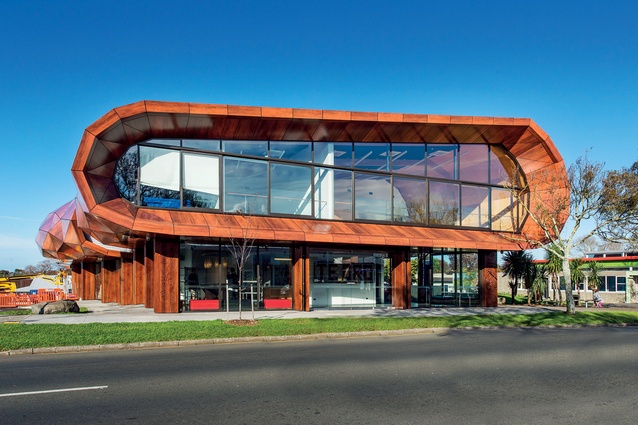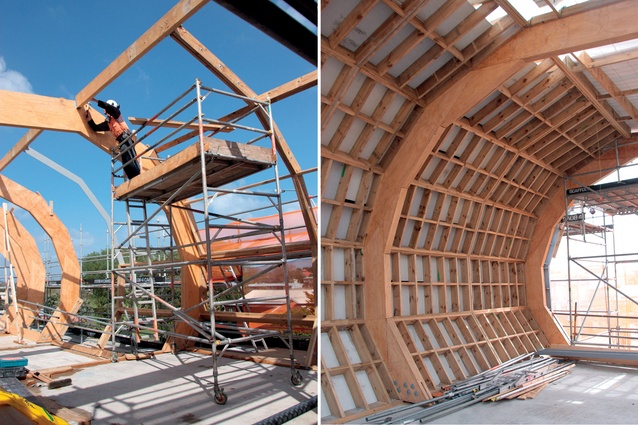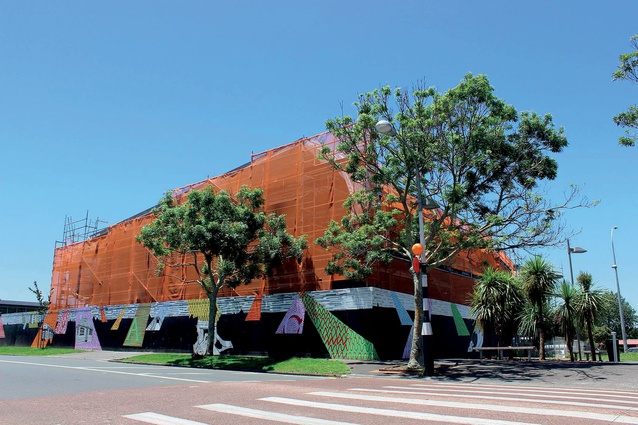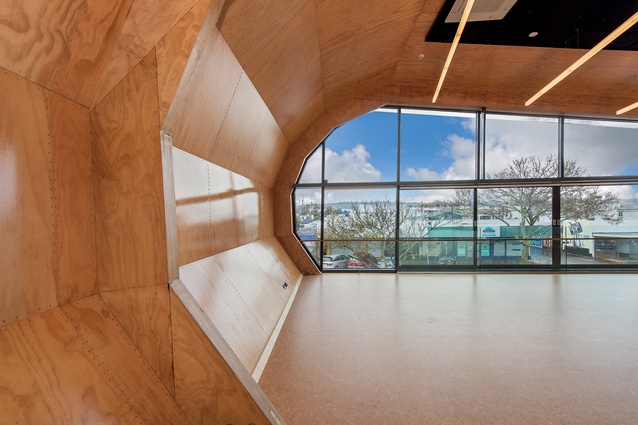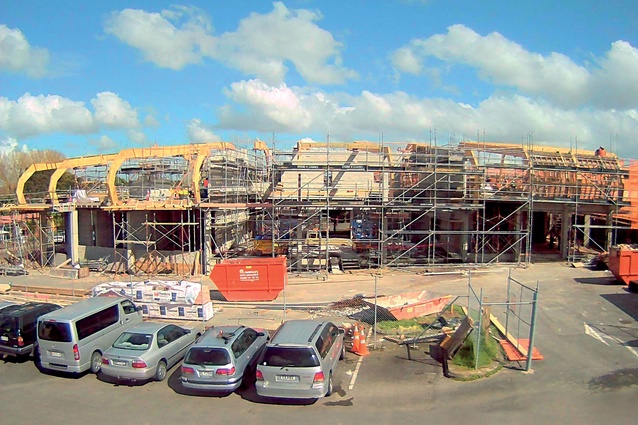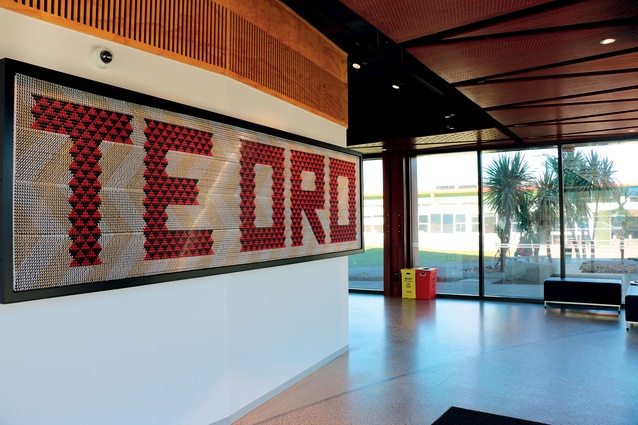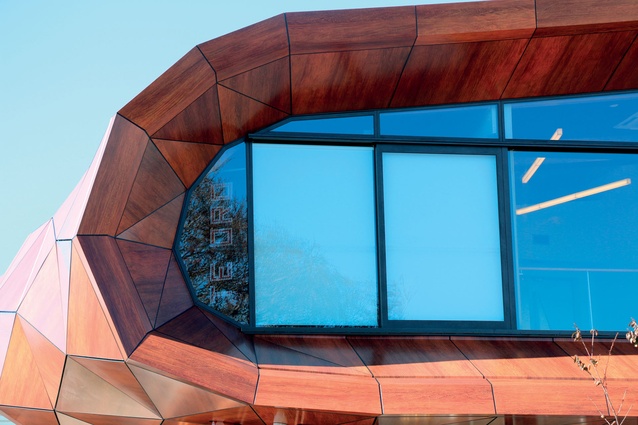Just hit play
Te Oro is one of those rare buildings that can be appreciated on many levels. Laypersons can admire the faceted façade, carved pillars, tukutuku panel and interior architecture and perhaps wonder how those involved managed to achieve, what is, undeniably, a striking building. People in the construction game look at the building and appreciate the level of dedication that went into its complex design and construction.
“It was certainly one the most challenging and fulfilling construction projects I’ve been involved in,” says Garyth Jones, Hawkins project site manager.
“Because Hawkins offered a design and build option for the façade at tender, there were only design schematics for the ACP cladding at the beginning of the project, which necessitated an ongoing design approach. Given the style and geometry of the building – few details are the same – it would have been impossible to construct the building in any other way.”
Jones says while this process added an extra dimension to the project, the strong relationship between all stakeholders mitigated any issues.
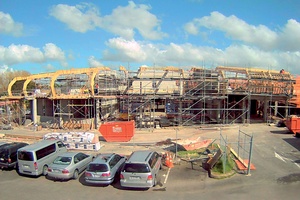
“The construction process was a true collaboration. My team and I worked closely with the consultants and the community. We provided input into the design process, surveying and setting out just about every step of the way. Archimedia did a fantastic job re documenting the new methodology, maintaining the integrity of the concept and the building. This collaborative approach ran through all facets of the project.”
Te Oro is located in the middle of Glen Innes Township at the centre of the main street and shares a site with Ruapotaka Marae, the local library and a community hall and is next door to the police station – a more logistically nightmarish site could hardly be envisioned.
“We are always conscious that construction works can impact the community and we do our best to be good neighbours and minimise disruptions,” says Jones.
A number of community open days were held during construction, which allowed stakeholders to keep community leaders abreast of the progress, strengthening communication between stakeholders.
“I’m proud to say our team completed construction of Te Oro without having to completely shut down the street or leave a truck on the road.”
Construction began in April 2014, and design intricacies aside, Jones says the foundation to mid-floor build was a fairly standard process. However, in keeping with the project’s focus on sustainability, the upper level has been constructed using LVL (Laminated Veneered Lumber) components, which coupled with the façade’s faceted cantilevered design upped the level of complexity exponentially.
“Across the length of the building, which is comprised of three pavilions interconnected by glazed components, there are 10 grid lines. This meant 20 structural beams, manufactured from LVL, were required. As the architecture at this level features facetted interior walls, you can imagine the level of design that went into creating “curved” structural beams that also had to adhere to seismic codes.”
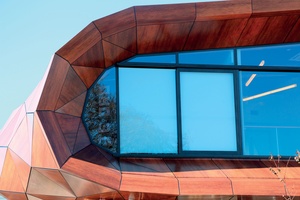
Even elements most wouldn’t consider, such as the scaffolding, required additional levels of planning.
“Again, your typical build doesn’t require much more than a standard scaffold plan. The scaffolding for Te Oro, however, not only had to sit flush with the lower level; it also needed to follow the contours of the cantilevered upper level. While not an insurmountable problem, it is another indication of the ‘above and beyond’ approach that our contractors went to to get this project delivered.”
This attention to detail was also applied to the aesthetic considerations of the building, with many of the construction materials also doubling as the finish, including those 22m-long LVL beams.
“Weeks of onsite work has gone into ensuring the highest level of finish possible,” says Jones. “In some instances – as was the case with the carved pillars around the exterior of the building and the block work in the main performance space – that follows months of prior planning.
“Everyone who has worked on the project knew from the outset that this was going to be an iconic building and committed to doing whatever necessary to produce an outstanding result for the community.”
When asked what his own favourite aspect of the building is, Jones replies without hesitation: “The façade. The sub-structure is amazing, but the façade is just magic.”

